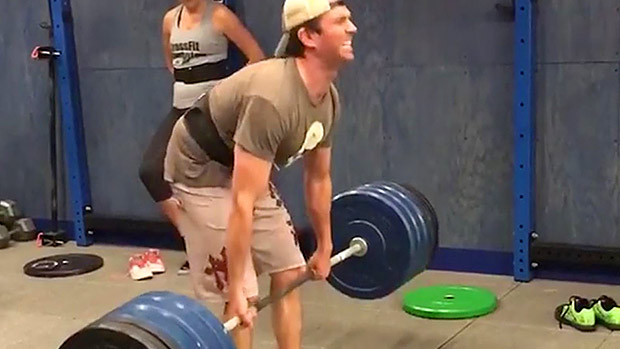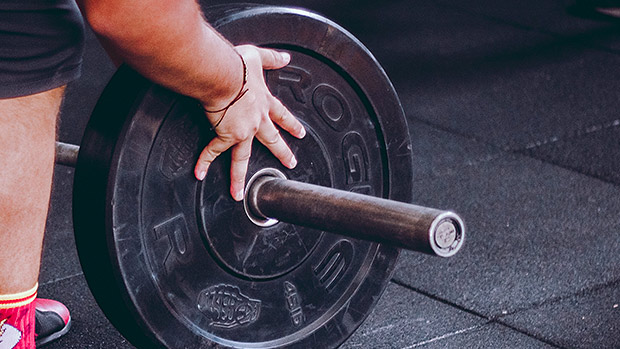Rounded deadlifts are an epidemic. You can't scroll through Instagram for two seconds without seeing some bro attempting a max effort deadlift with their spine bending like a accordion.

A little rounding in the thoracic spine is actually okay, but most people round over at the lumbar region which turns an epic one-rep max attempt into a cringy display of a nearly snapped low back. Lumbar flexion during deadlifts occurs because of one of the following (or a combination):
- Weak or unsustained intra-abdominal bracing
- Weak spinal erectors
- Loss of tension in the upper back
How to Fix It
Here's an odd trick I learned from powerlifter Greg Nuckols that fixes all of these common causes. (And this trick can be used for the squat as well.)
- Take a band and anchor it to a heavy weight in front of your deadlift setup. You won't need a strong band. A light band goes a long way with this drill.
- Where you anchor the band will depend on how tall you are as well as your deadlift variation. If you're doing a stiff-legged deadlift or an RDL where you're more hinged over, you'll need to anchor the band closer. If you're doing something more upright like a conventional or trap-bar deadlift, the anchor should be further.
- Wrap the band around your neck and do a few sets with this setup. You'll feel your entire posterior chain light up.
Why It Works
The band will pull on your spine from the top down. The tension reminds you to stay tight while strengthening your spinal erectors. This will fix both low back and upper-back rounding. Thanks to the band, your deadlift is now stable, safe, and no longer a joint-crumbling eyesore.
For programming, do these before your actual working sets. Or if you struggle heavily with rounding your back, you can do all your sets with this setup. Your spine will thank you.




